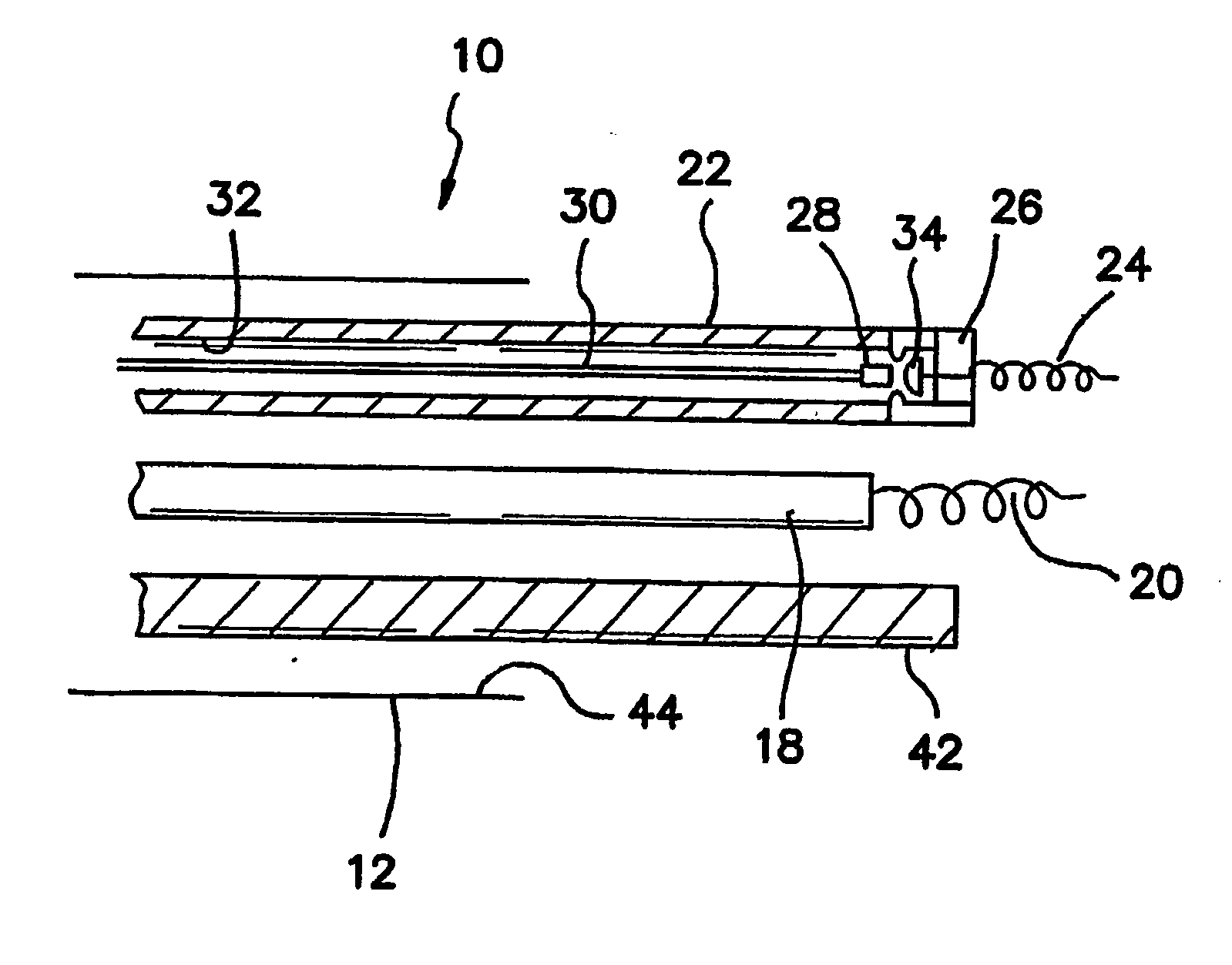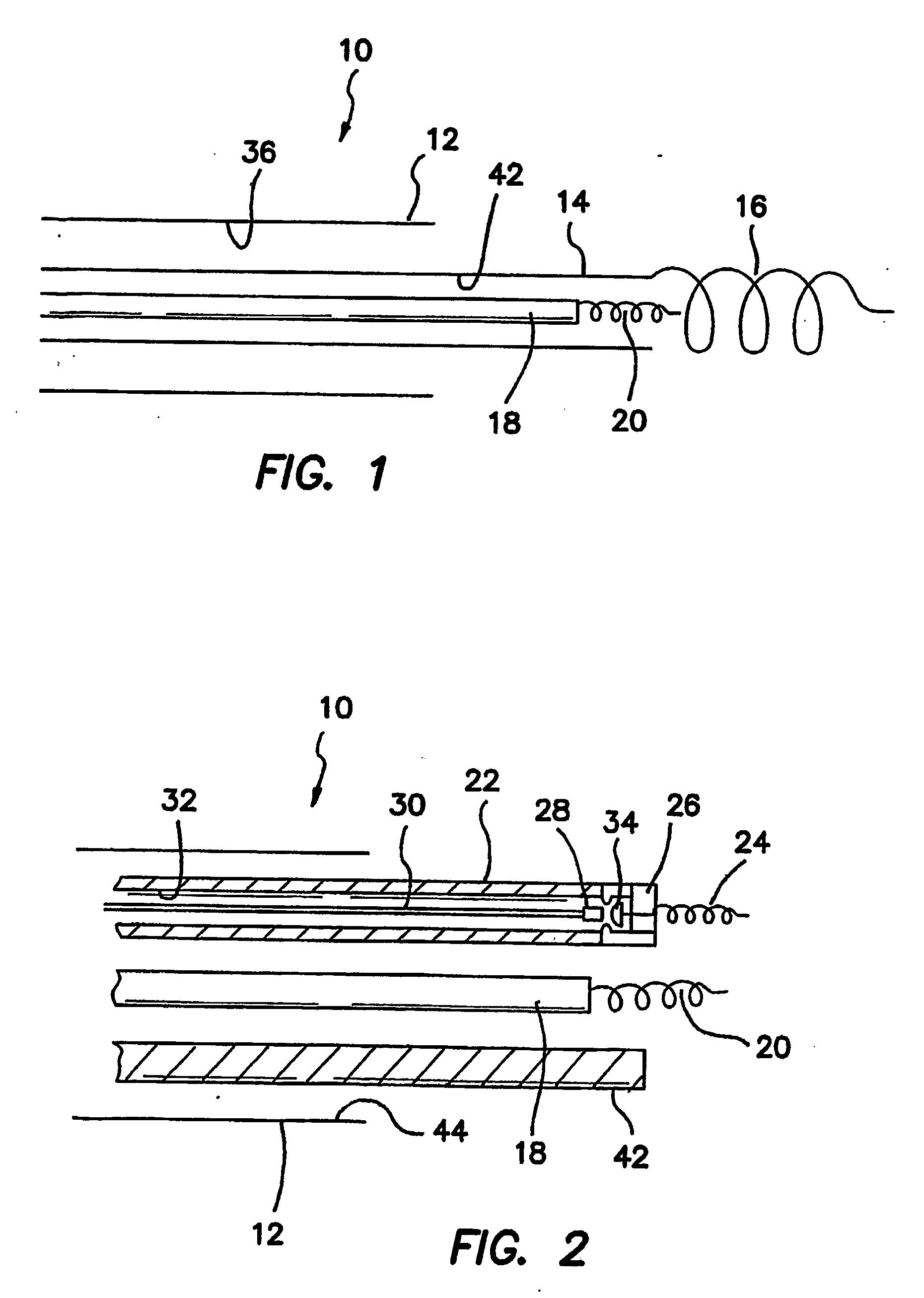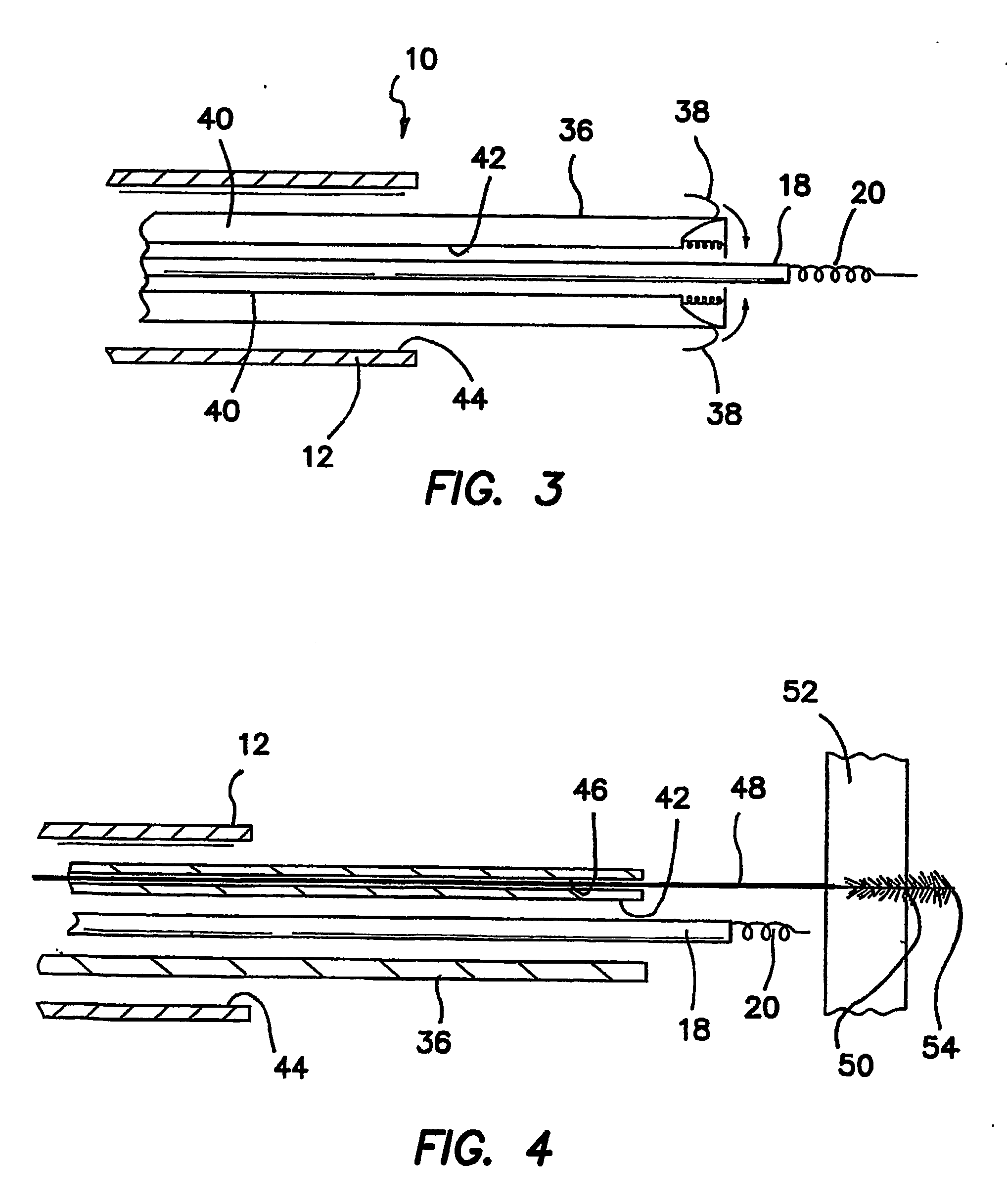Method and apparatus for anchoring of pacing leads
a technology of pacing leads and anchoring devices, applied in the field of cardiac surgery, can solve problems such as the inability to rotate the insertors
- Summary
- Abstract
- Description
- Claims
- Application Information
AI Technical Summary
Benefits of technology
Problems solved by technology
Method used
Image
Examples
second embodiment
[0064]FIG. 2 is a side cross sectional view of the distal end of telescopic introducer 10 which is comprised of a biased introducer 22 through which pacemaker lead 18 with distal anchor 20 is implanted. A parallel lumen 32 is defined in the wall of introducer 22 through which a torsional wire 30 is disposed. Wire 30 has a termination 28 which is or can be coupled with a captive screw 34 which has a distal anchor 24. It is contemplated that screw 34 will be retained within lumen 32 until deployment, at which time it is then distally extended by being pushed by wire 30 and then rotated by wire 30 to fix anchor 24 into the adjacent myocardium. In this embodiment, anchors 20 and 24 are not telescopic, but are deployed in parallel.
[0065] It is to be understood that instead of a captive screw 34, wire 30 and anchor 24 may be integral and simply delivered through auxiliary lumen 32. A plurality of such auxiliary lumens 32 and wire 30 / anchor 24 combinations may be provided and employed in a...
third embodiment
[0067]FIG. 3 is a side cross sectional view of the distal end of telescopic introducer 10 which is comprised of a prebiased introducer 36 through which pacemaker lead 18 with distal anchor 20 is implanted. The distal portion or end of introducer 36 is provided with one or more barbless hooks or “fish hooks”, which are normally resiliently retained within recesses defined in the wall of introducer 36. Hooks 38 can be deployed by pulling tension wires 40 coupled to hooks 38 to rotate hooks 38 out of the recesses in introducer 36 to a position where they may penetrate radially adjacent myocardium or vascular tissue. Once hooks 38 are deployed by pulling on wires 40, pacemaker 18 is anchored from the end of anchored introducer 36. Once pacemaker lead 18 is anchored, the tension on wires 40 is released, allowing springs or other resilient means attached to hooks 38 to return them to their undeployed configuration with recesses within introducer 36.
[0068] Again it must be understood that ...
PUM
 Login to View More
Login to View More Abstract
Description
Claims
Application Information
 Login to View More
Login to View More - R&D
- Intellectual Property
- Life Sciences
- Materials
- Tech Scout
- Unparalleled Data Quality
- Higher Quality Content
- 60% Fewer Hallucinations
Browse by: Latest US Patents, China's latest patents, Technical Efficacy Thesaurus, Application Domain, Technology Topic, Popular Technical Reports.
© 2025 PatSnap. All rights reserved.Legal|Privacy policy|Modern Slavery Act Transparency Statement|Sitemap|About US| Contact US: help@patsnap.com



